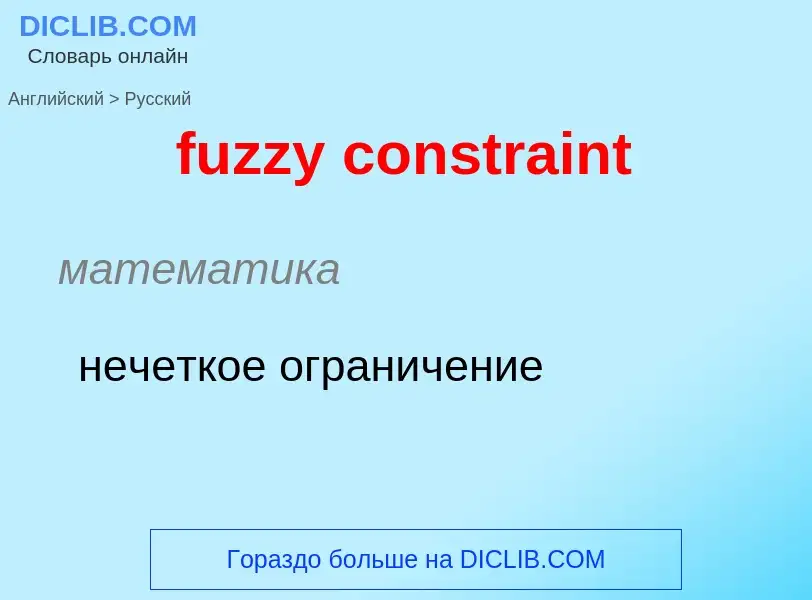Translation and analysis of words by ChatGPT artificial intelligence
On this page you can get a detailed analysis of a word or phrase, produced by the best artificial intelligence technology to date:
- how the word is used
- frequency of use
- it is used more often in oral or written speech
- word translation options
- usage examples (several phrases with translation)
- etymology
fuzzy constraint - translation to russian
математика
нечеткое ограничение
общая лексика
нечёткое множество
математика
размытое (нечеткое) множество
Смотрите также
математика
нечеткая категория
Definition
Wikipedia
Constraint logic programming is a form of constraint programming, in which logic programming is extended to include concepts from constraint satisfaction. A constraint logic program is a logic program that contains constraints in the body of clauses. An example of a clause including a constraint is A(X,Y) :- X+Y>0, B(X), C(Y). In this clause, X+Y>0 is a constraint; A(X,Y), B(X), and C(Y) are literals as in regular logic programming. This clause states one condition under which the statement A(X,Y) holds: X+Y is greater than zero and both B(X) and C(Y) are true.
As in regular logic programming, programs are queried about the provability of a goal, which may contain constraints in addition to literals. A proof for a goal is composed of clauses whose bodies are satisfiable constraints and literals that can in turn be proved using other clauses. Execution is performed by an interpreter, which starts from the goal and recursively scans the clauses trying to prove the goal. Constraints encountered during this scan are placed in a set called constraint store. If this set is found out to be unsatisfiable, the interpreter backtracks, trying to use other clauses for proving the goal. In practice, satisfiability of the constraint store may be checked using an incomplete algorithm, which does not always detect inconsistency.


